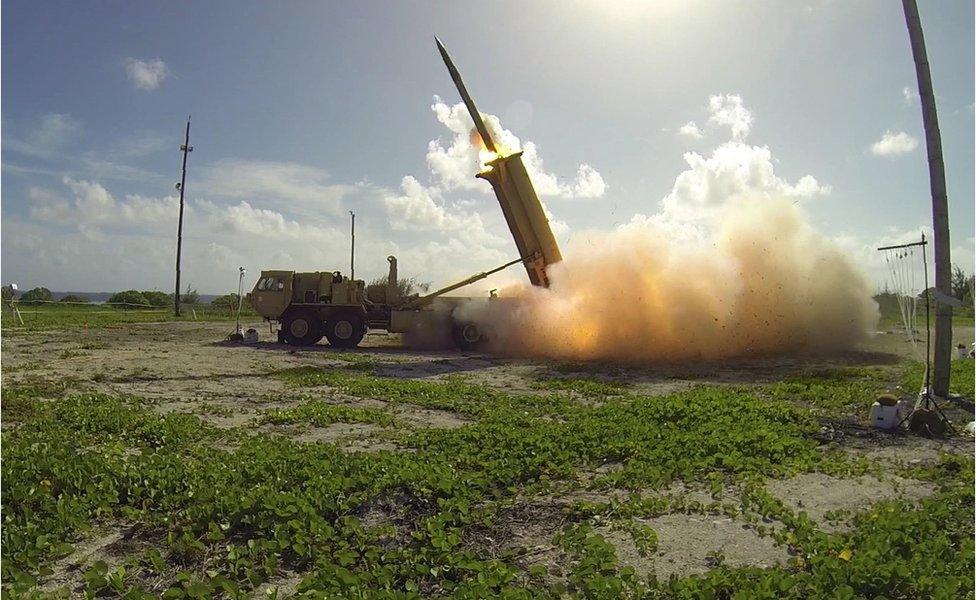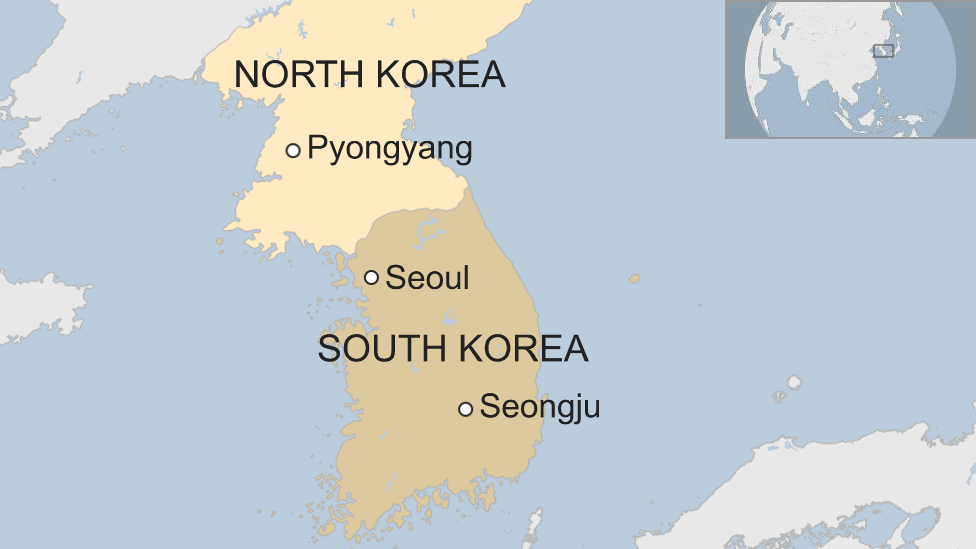US successfully tests Thaad anti-missile system in Pacific
- Published

The US says the Thaad system successfully shot down a target during a test run
The US military has said its controversial Thaad missile defence system successfully shot down a target during a test over the Pacific Ocean.
Thaad, or Terminal High Altitude Area Defense, halted a simulated, ballistic intermediate-range missile like the ones being developed by North Korea.
The test was planned months ago, but comes amid rising tension with North Korea over its weapons programme.
Pyongyang claimed it has tested a series of missiles in recent weeks.
On 4 July, Pyongyang said it had carried out its first successful test of an inter-continental ballistic missile (ICBM). It said the Hwasong-14 could hit "any part of the world", but the US military described it as an intermediate-range missile.
North Korea has repeatedly defied a UN resolution banning all nuclear and missile activity, and has ramped up the pace of its tests in recent months.
"The successful demonstration of Thaad against an IRBM-range missile threat bolsters the country's defensive capability against developing missile threats in North Korea and other countries," the US Missile Defense Agency said in a statement on Tuesday.
The ground-based system, designed to intercept short, medium and intermediate ballistic missiles, has hit its target all 14 intercept attempts since testing began more than a decade ago, but the latest test was the first ever success against an IRBM, according to US officials.
In Tuesday's test in Kodiak, Alaska, Thaad shot down a ballistic missile target launched from a C-17 aircraft flying north of Hawaii, according to the agency.
The US has installed Thaad in Guam and at a former golf course in South Korea, amid angry protests.

South Koreans in central county of Seongju, where the system is located, believe it is a potential target for attacks and endangers the lives of those living nearby.
China also strongly opposes the system, believing it interferes with the security of its own military operations.
Earlier this month, both Beijing and Moscow urged the US to end its deployment of Thaad in South Korea.
When the announcement of the Thaad deployment was made last year, North Korea promised a "physical response", with state media expressing the "unwavering will of our army to deal a ruthless retaliatory strike".
The US Missile Defense Agency told lawmakers in June it plans to deploy more than 50 Thaad systems to the US Army between October 2017 and September 2018.

What is the Terminal High Altitude Area Defense System (Thaad)?
Shoots down short and medium-range ballistic missiles in the terminal phase of their flight
Uses hit-to-kill technology - where kinetic energy destroys the incoming warhead
Has a range of 200km and can reach an altitude of 150km
US has previously deployed it in Guam and Hawaii as a measure against potential attacks from North Korea

1. The enemy launches a missile
2. The Thaad radar system detects the launch, which is relayed to command and control
3. Thaad command and control instructs the launch of an interceptor missile
4. The interceptor missile is fired at the enemy projectile
5. The enemy projectile is destroyed in the terminal phase of flight
The launcher trucks can hold up to eight interceptor missiles.
